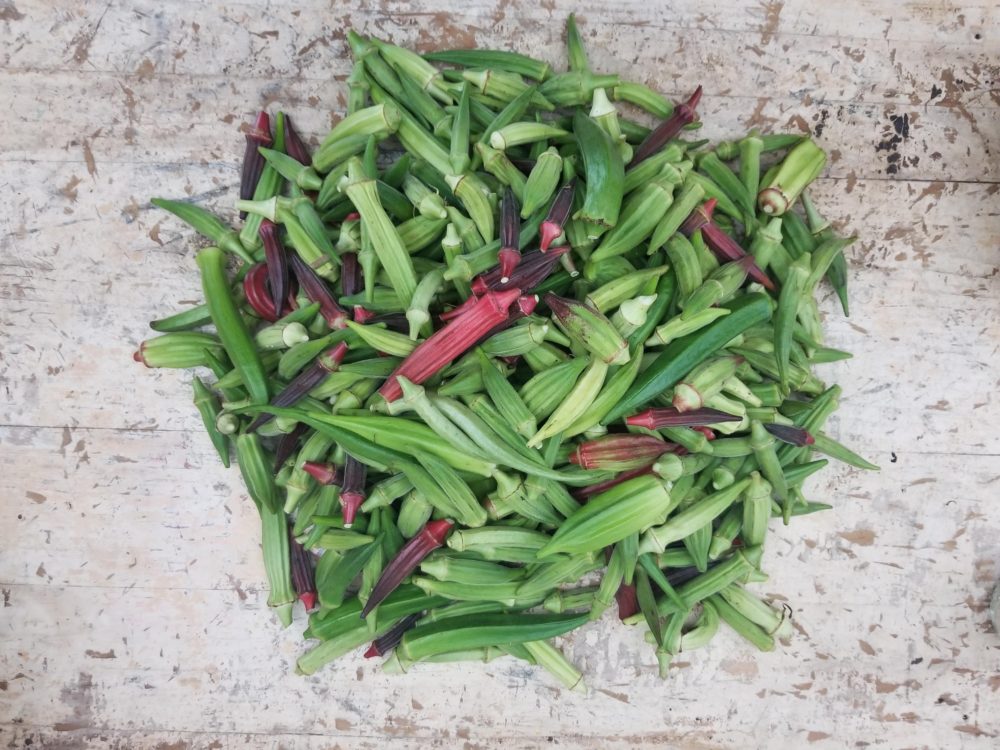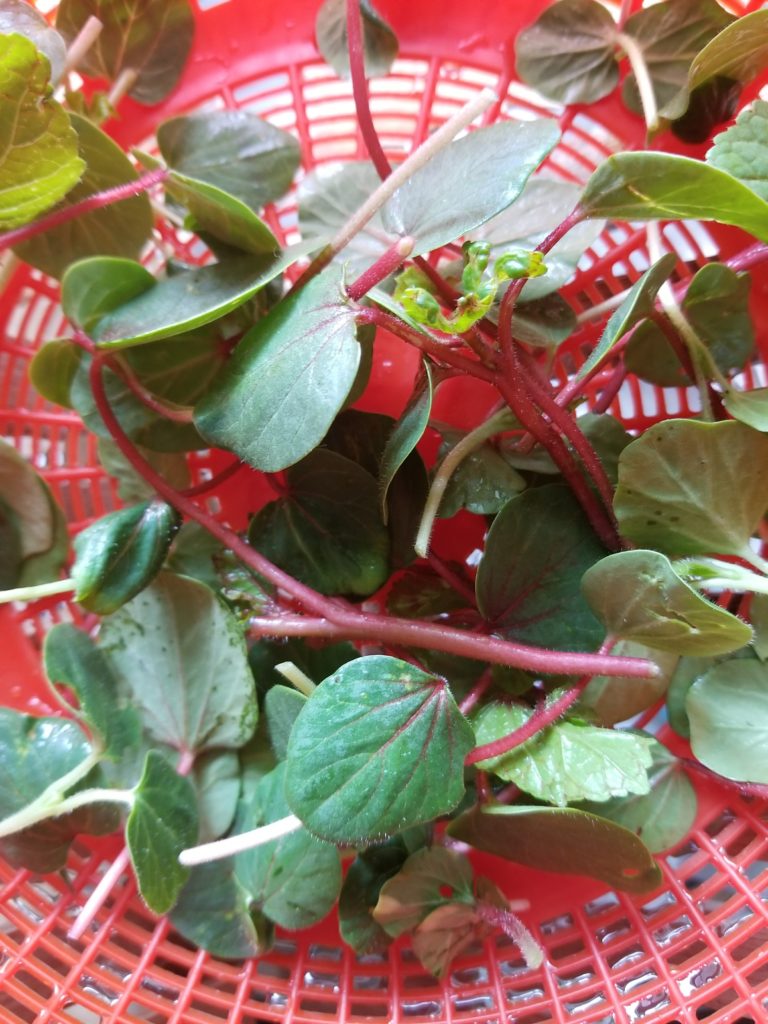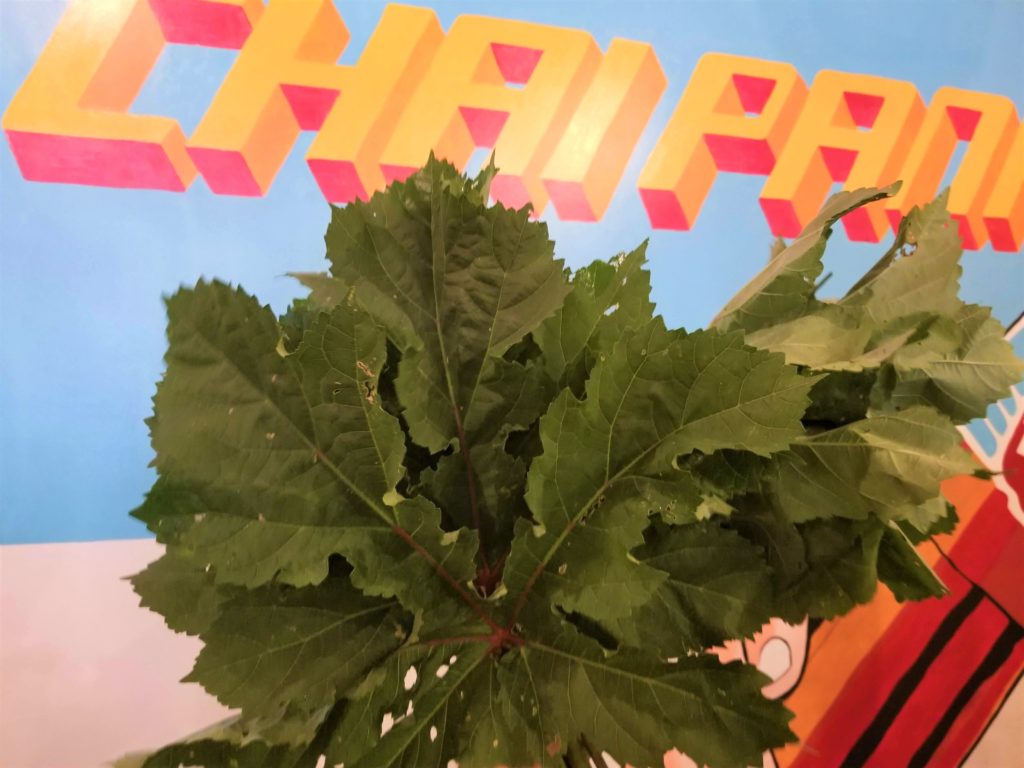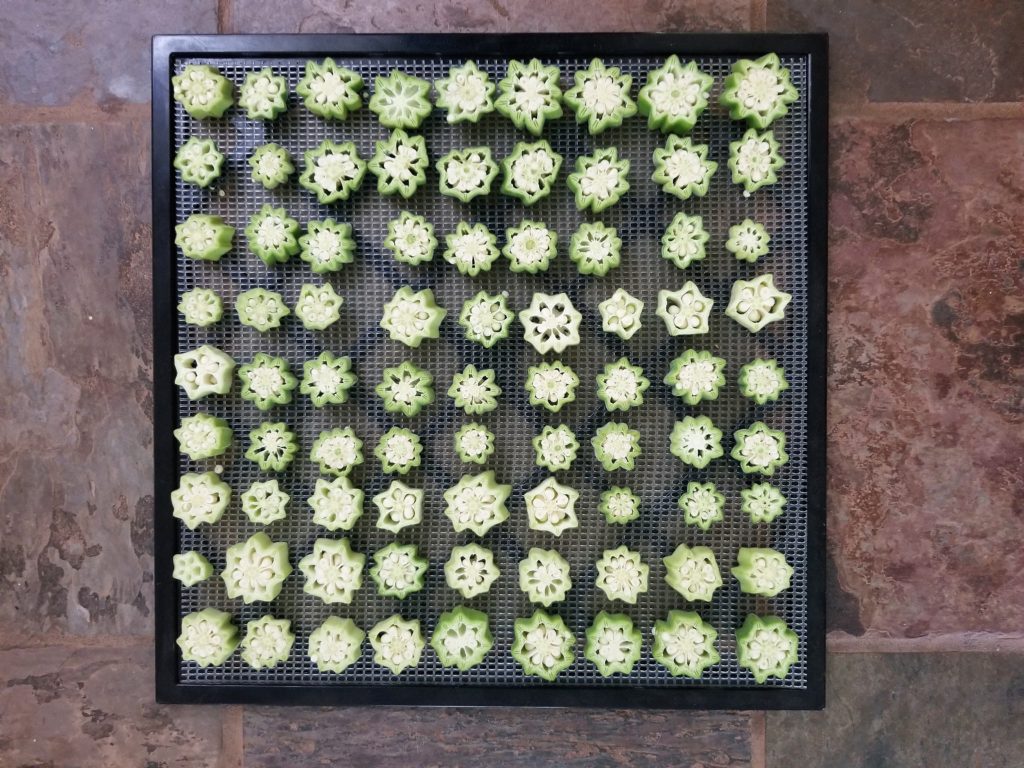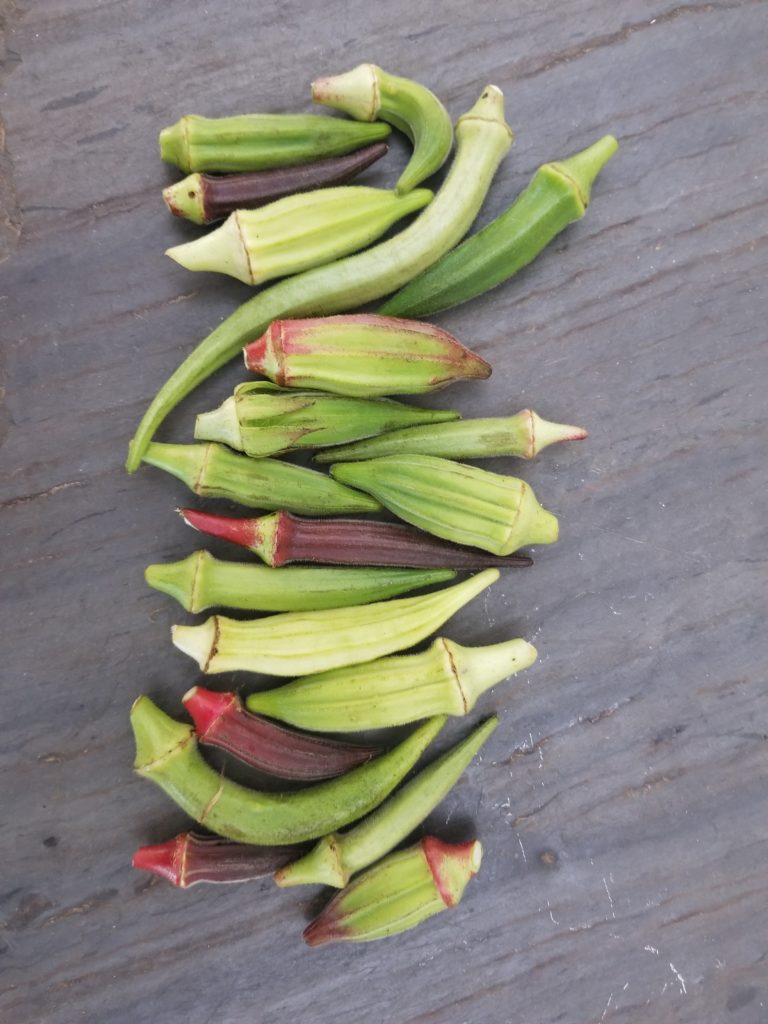By Chris Smith, author of The Whole Okra | Tuesday, Sept. 4, 2018 –
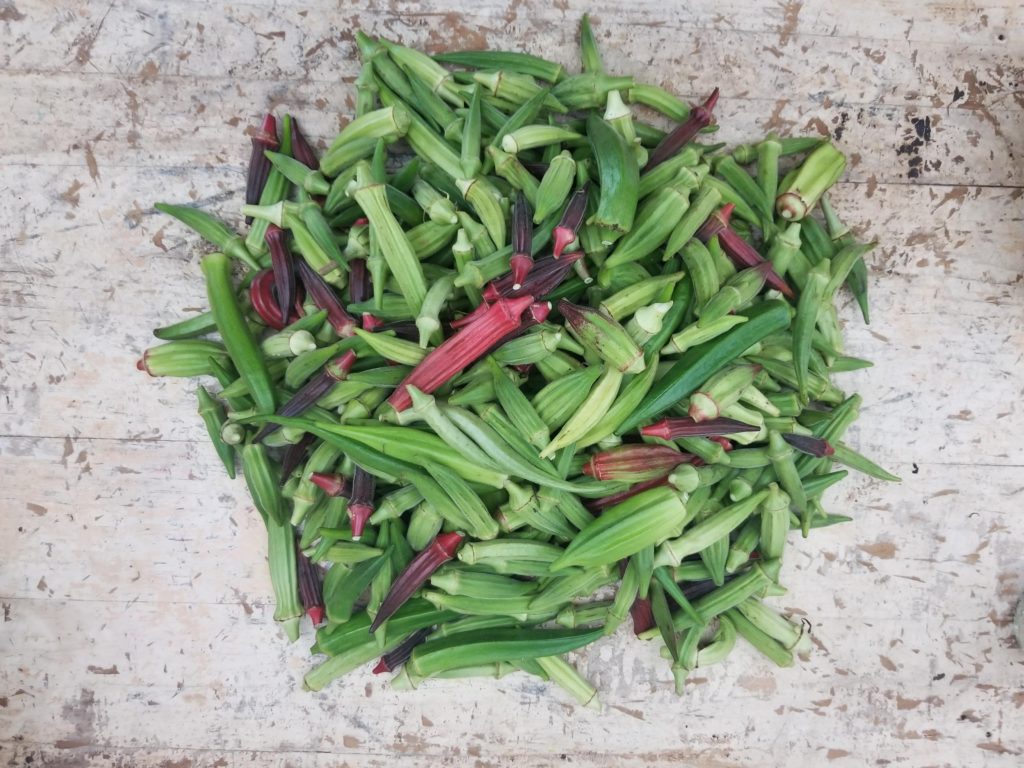 This year I planted 76 different varieties of okra in Leicester, North Carolina. I have three main trial plots. The biggest is at Franny’s Farm, with six plants of 60 varieties, plus one plant of a 61st variety (don’t ask). There’s also one plant of an unknown variety (again, please don’t ask). In the second plot, I have a Random Red Variety Trial at the Diloreti Family Farm. At the third, I have a collection of high-oil content varieties growing at my place (Blue and Yellow Makes Farm, but it’s really a homestead).
This year I planted 76 different varieties of okra in Leicester, North Carolina. I have three main trial plots. The biggest is at Franny’s Farm, with six plants of 60 varieties, plus one plant of a 61st variety (don’t ask). There’s also one plant of an unknown variety (again, please don’t ask). In the second plot, I have a Random Red Variety Trial at the Diloreti Family Farm. At the third, I have a collection of high-oil content varieties growing at my place (Blue and Yellow Makes Farm, but it’s really a homestead).
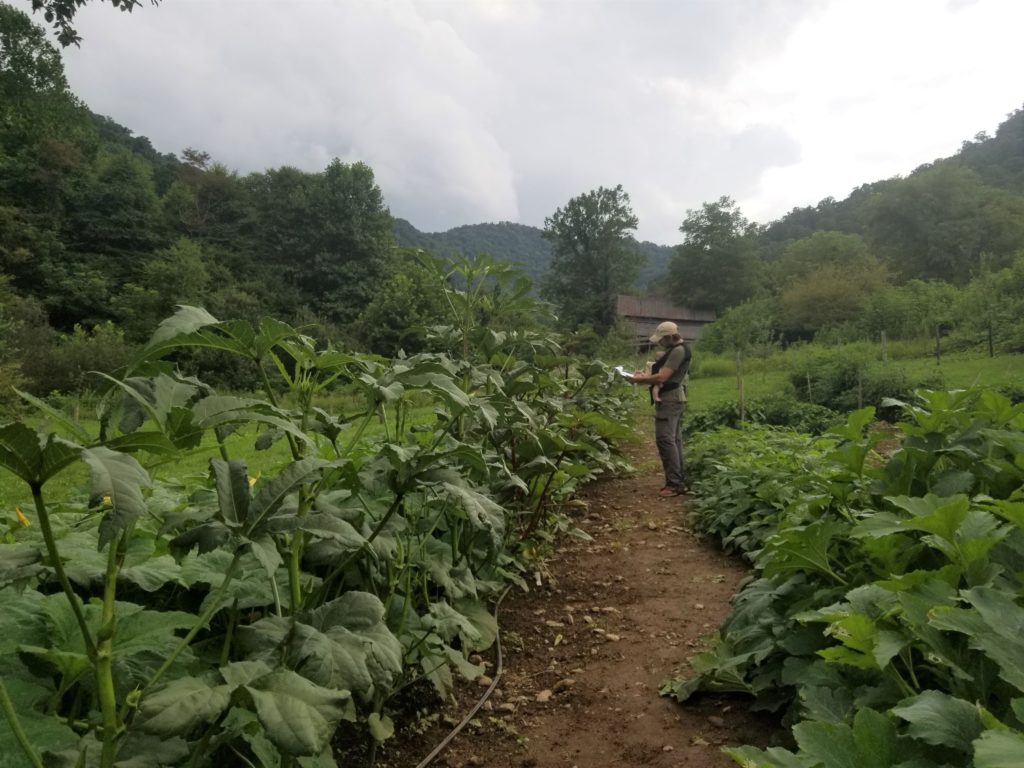 Three-month-old Zoe helping me at the Random Red variety trial.
Three-month-old Zoe helping me at the Random Red variety trial.
When I tell people this, I receive a number of standard responses.
Shock: “There are THAT many okra varieties?”
Yes, it’s true; okra is more than Clemson Spineless and Red Burgundy. In the U.S. alone, there are hundreds of named varieties–I actually have 175 in my collection, but even that’s barely scratching the surface. The United States Department of Agriculture (USDA) houses hundreds of unnamed accessions from all over the world, and worldwide genebanks hold thousands of distinct cultivars (with strong centers of diversity in India and Nigeria). Very little breeding work has been done, but the genetic potential holds great promise.
Disbelief: “But they all look the same, right?”
I can empathize with this question because I, too, wondered if all these ‘differences’ were actually subtle iterations of the same basic okra types. But to walk into my okra field is to be astounded by diversity—tall and short, fat and thin, deepest reds through the palest greens, spiny and curly, as well as stout and stubby. It’s truly incredible. And there are taste differences! At a recent field day, we conducted a World-Cup style elimination taste test and reduced the field to four finalists. There was absolute consensus on the winning variety, a Turkish landrace (Yalova Akkoy) noted for its sweet nuttiness.
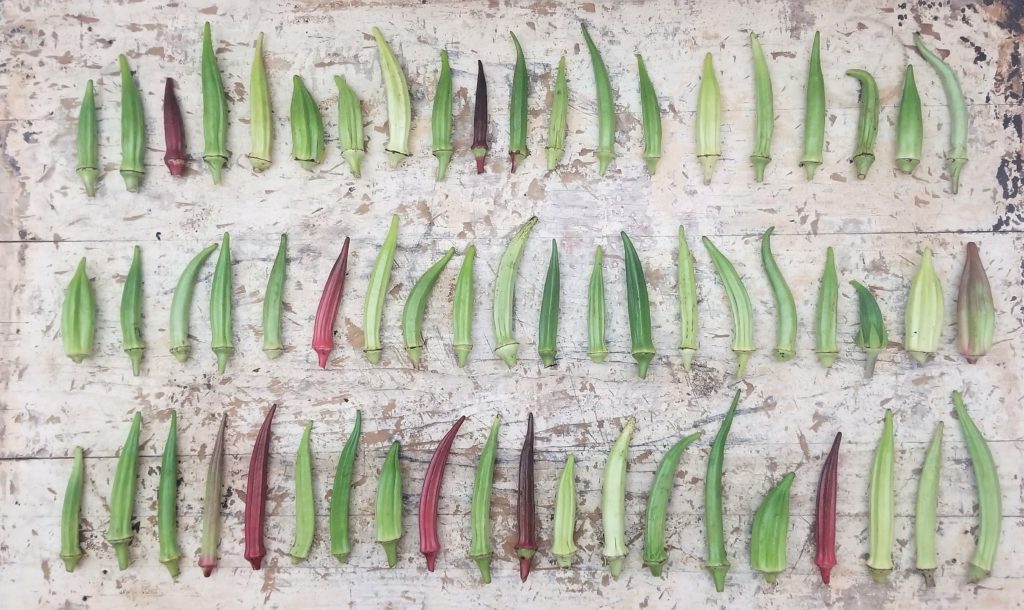 What 60 different okra varieties look like.
What 60 different okra varieties look like.
Suspicion: “Why are you doing this?”
As if only a madman would contemplate such an undertaking. My British accent mitigates this response somewhat, protected by the assumption that I probably don’t know any better. But the reality is that I’m writing a book, The Whole Okra, and I am the executive director for The Utopian Seed Project, a non-profit committed to trialing crops and varieties in the Southeast to support and celebrate diversity in food and farming. Both these things make me incredibly excited to explore everything there is to explore about okra! And there is a lot to explore when you take a seed-to-stem approach to okra appreciation.
From a single planting of okra, we can extract the following yields:
Greens
Okra leaves are entirely edible. Good for fresh eating in their very young stage, okra leaves are mainly used as a cooking green since the heat removes any spikiness. They can be used as thickeners in soups or powdered for winter storage for use in smoothies, soups, and stews. Chef Meherwan Irani of Chai Pani, an Indian Street Food restaurant in Asheville, has made okra leaf pakora. Meanwhile, Chef Steve Goff of Aux Bar, also in Asheville, plans to make an okra leaf kimchi.
Above: Okra microgreens ready to be eaten raw.
Below: Okra leaves at Chai Pani.
Pods
We eat the immature pods before they go ‘woody’. The number of pod preparations is astounding; I fully believe anyone who doesn’t enjoy okra hasn’t had it cooked right. You can ferment, pickle, freeze, and dry okra for winter use. In addition to the Southern classics of deep-fried okra and gumbo, there are a wealth of international preparations, not least from Africa, okra’s continent of origin.
Okra slices dehydrating.
Flowers
The flowers are beautiful and have an okra-y-asparagus taste. They can be prepared along the same lines as squash flowers, but are also good raw. Okra flowers are perfect (botanically), so eating the flowers means sacrificing pod development. Since most okra growers complain of overproduction, eating the flowers can be a great way to slow growth down! I’ve infused vodkas to create a vibrant red, tasty liquid. There is also a secret okra beer currently in production with a well-known experimental brewery in Charlotte! The Asheville Tea Company has made a delicious okra flower tea, with English tea overtones.
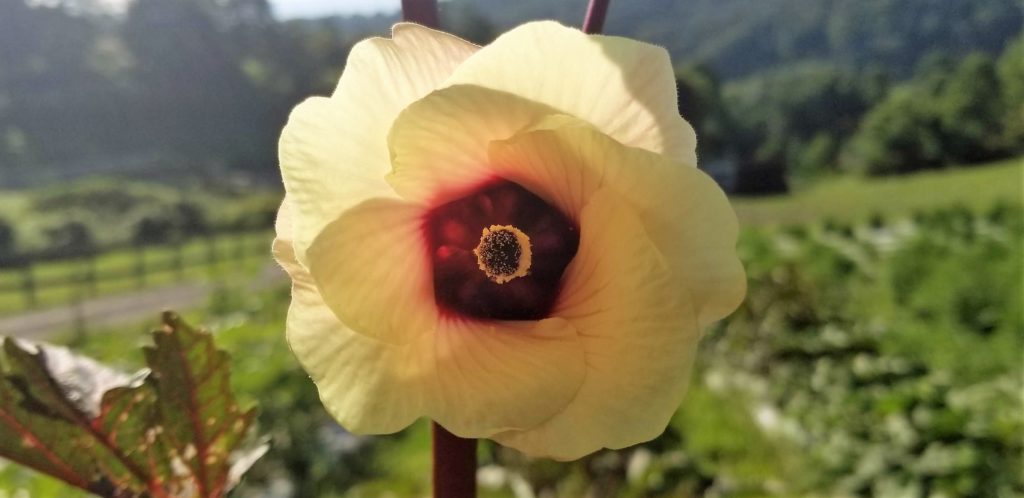
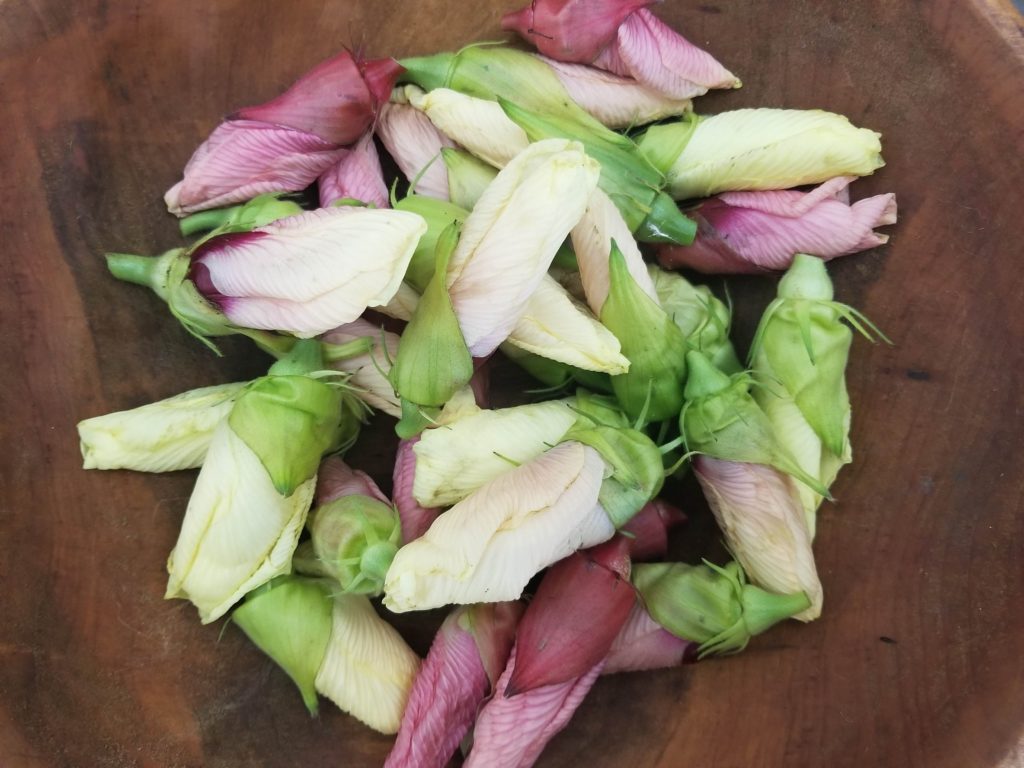 Above: Okra flowers on the stalk.
Above: Okra flowers on the stalk.
Below: Harvested okra flowers.
Seeds
Okra varieties have a variable oil content in their seeds (9-23% variance), but I have successfully pressed them for a light, citrusy oil – similar to olive oil – with a yellow-green hue. You can buy okra seed oil from Clay Oliver of Oliver Farm Artisan Oils in Georgia, but I think they’re currently the only commercial option!
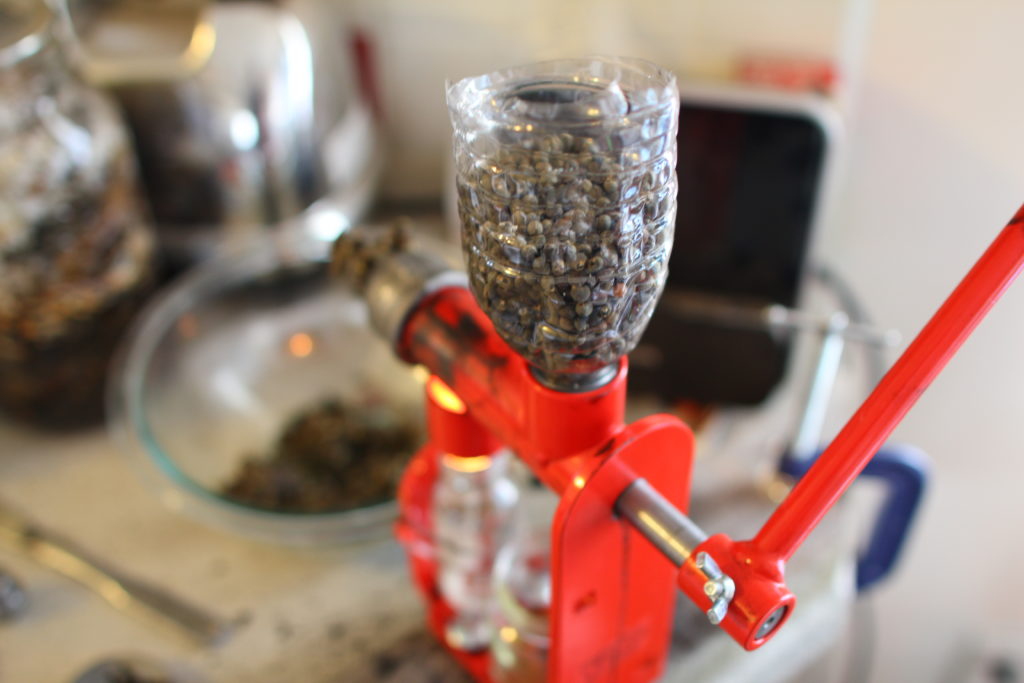
Okra seed processed into oil.
The mature seeds can also be roasted and ground for a rich, nutty, gluten-free, high protein flour; Asheville’s Old World Levain (OWL) Bakery has made okra-seed sourdoughs and savory muffins. I’ve made pie crusts, pizza bases, and crackers with the flour and the flavor is excellent—almost coffee-like.
Structure
Okra has an incredibly aggressive root network, with 4.5-foot taproots at maturity and wide, dense lateral roots. The opportunity for injecting organic matter deep into the soil is huge. The top growth can support beans in season, peas during the winter (I’ve had dead stalks stand all winter) and the bast fibre makes a very strong cordage and has papermaking potential. The roots have mallow root-like properties, with opportunities for extracts in the same way as common mallow.
That’s just a whistle-stop tour of some of the potential of okra. If want to follow my okra adventures, then you can do so at The Utopian Seed Project website or find me on Instagram @blueandyellowmakes. The Whole Okra is published by Chelsea Green Publishing and is a James Beard award winning book.
All photos by Chris Smith.


